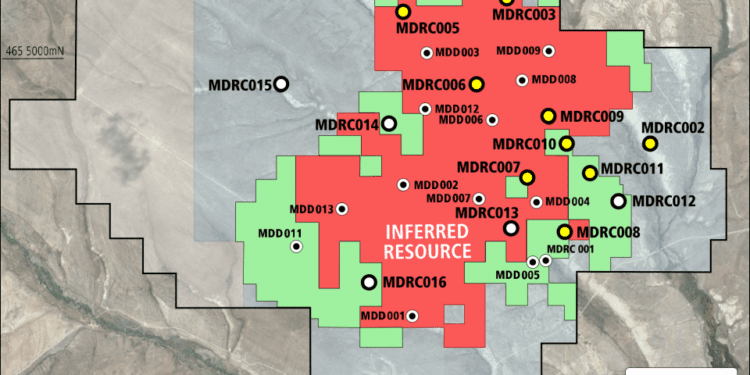95% Recoveries At McDermitt Deposit In USA
Jindalee Resources Limited (ASX:JRL) has successfully achieved recoveries of >95% in metallurgical testwork conducted on samples from its 100% owned McDermitt lithium deposit, located in the USA.
Results from leach testwork undertaken on bulk (non-beneficiated) samples in 2019 indicated lithium recoveries of >95% with short residence times using sulphuric acid (H2SO4) leach at moderate temperatures and atmospheric pressure, with potential to reduce acid consumption via recycling of the leachate.
In August 2020 Jindalee announced that beneficiation of McDermitt ore via attrition scrubbing at 20% solids had increased the lithium content in the <0.01mm fraction by more than 50% (from 0.22% to 0.34%) and had reduced carbonate and analcime (both acid consuming minerals).
The latest attrition scrubbing testwork, designed to produce a beneficiated sample for leaching experiments, increased the lithium content in the <0.01mm fraction by 60.9% (from 0.23% to 0.37%). Furthermore, initial leaching experiments on beneficiated samples demonstrated lithium extraction rates of 94-97% with 26% less acid consumed per lithium unit than for previous similar experiments on non-beneficiated ore. The testwork also indicated that the residue remaining after leaching is relatively benign, comprising quartz, feldspar and gypsum.
Experiments to further optimise lithium recoveries and reduce acid consumption are continuing.
For the latest testwork, approximately 44kg of coarse residues from crushed core were shipped to Hazen Research Inc., a highly regarded metallurgical laboratory in Colorado. These holes were selected because they are located in a relatively shallow part of the McDermitt resource and therefore represent portions of the deposit likely to encountered early in any future mining operation.
The samples were composited to create a master or head sample for the metallurgical testwork. The head sample was assayed for lithium (Li) and several impurity elements; this assayed 0.23% Li using four acid digestion and 6.84% carbonate (CO3). The sample was also analysed using X-Ray Diffraction (XRD) to identify the mineral constituents, which were dominated by feldspars (44%) with lesser amounts of quartz (13%), calcite (14%), analcime (11%) and smectite clays (17%). This also showed that lithium is almost exclusively associated with smectites.
Attrition scrubbing was conducted on a sub-sample (4033-27) at 30% solids for 30 minutes. This work resulted in approximately 75% of the lithium in the feed (46.5% of the initial sample by weight) reporting to the <0.010mm fraction, representing a 60.9% uplift in grade, from 0.23% to 0.37%.
Splits from the beneficiated sample (4033-27) were then slurried, heated to 50°C, H2SO4 added and the samples agitated for 90 minutes. The samples were then filtered and re-slurried in wash from the previous cycle and the process repeated, with the reaction slurry filtered, the residue washed and samples analysed for a suite of elements. Liquid samples also analysed for free acid. For further details on experimental conditions please refer to the appended JORC Table 1.
Results were very encouraging with lithium extraction rates of 94-97% and the pregnant liquor solution (PLS) produced having low free acid. Acid consumption in these experiments averaged 148kg H2SO4/kg Li leached, compared with approximately 200kg H2SO4/kg Li leached for comparable testwork on non- beneficiated ore from McDermitt (or 26% less acid consumed per lithium unit leached). The testwork has also indicated that the mineral composition of the residue remaining after leaching is relatively benign, comprising quartz (17.9%), feldspar (49.5%) and gypsum (32.6%).












